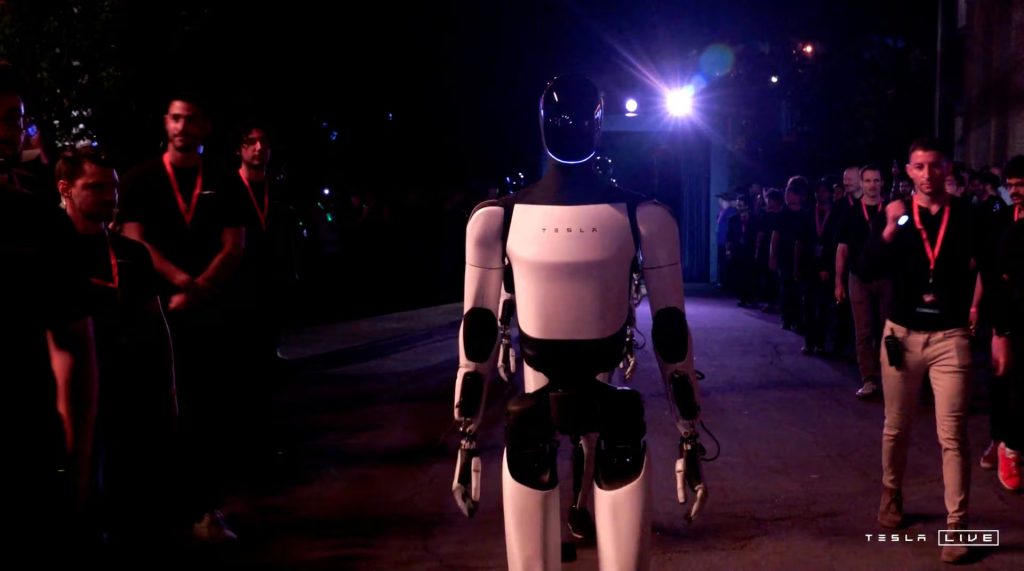Elon Musk has done it again, dazzling crowds with a futuristic vision for Tesla’s next big move. At a star-studded event in Los Angeles, the billionaire unveiled Tesla’s long-anticipated “Cybercab” and a surprise “Robovan.” With both vehicles boasting gull-wing doors and no steering wheels or pedals, Musk is doubling down on his push for a driverless future. But despite the fanfare, questions remain about whether Tesla can turn these concepts into reality.
A Bold Bet on Robotaxis—But Can Tesla Deliver?
Musk took to the stage in the Cybercab, which he says will be available from 2026 and priced at under $30,000. The robovan, capable of carrying up to 20 people, also made its debut. Despite Musk’s optimism, he left many details vague, including how Tesla plans to ramp up production or navigate the inevitable regulatory minefield of autonomous vehicle approvals.
The market is skeptical. Tesla’s track record with timelines is shaky—Musk himself has admitted he tends to be “optimistic.” Experts caution that the reality of deploying fully autonomous vehicles, especially at scale, could take years. Safety concerns loom large, as the technology still struggles with challenges like adverse weather and complex driving scenarios.
Musk Paints a Picture—But Critics Remain Unconvinced
Striding out in a leather jacket, Musk painted an alluring picture of a world where autonomous vehicles drive ten times safer than humans. “The autonomous future is here,” he declared, emphasizing how driverless cars could give people back their time. But some analysts aren’t buying the hype.
“I’m a shareholder and pretty disappointed. I think the market wanted more definitive timelines,” said Dennis Dick of Triple D Trading. Others, like Jessica Caldwell from Edmunds, noted that while Musk’s vision is compelling, he left critical questions unanswered. Musk’s previous promises of operational robotaxis by 2020 are still unfulfilled, and Tesla’s full self-driving (FSD) technology continues to face legal scrutiny over fatal accidents.

An Event to Impress—But No Clear Plan
The “We, Robot” event—a nod to Isaac Asimov’s science fiction—kicked off an hour late due to a reported medical emergency. Still, the event drew in millions of viewers, with Musk touting futuristic features like inductive charging for the Cybercab and low operational costs—20 cents per mile for the Cybercab and just 5 cents for the robovan. Yet, there was no mention of the long-promised Tesla app that would allow owners to turn their cars into revenue-generating robotaxis.
Musk has shifted focus away from building affordable mass-market EVs, a pivot that some critics argue is risky as Tesla’s EV sales continue to stall. Reuters data suggests Tesla could face its first-ever decline in deliveries this year, as price cuts fail to offset high-interest rates and an aging lineup. The scrapped plans for a cheaper car to counteract slowing demand have only added to the uncertainty.
Competitors Struggling, and Tesla’s Gamble
The robotaxi market is proving to be a tough nut to crack. Rivals like Alphabet’s Waymo and GM’s Cruise have burned billions of dollars, with some abandoning their projects altogether. Waymo, the only U.S. firm with uncrewed robotaxis collecting fares, has faced similar obstacles, while Amazon’s Zoox continues to test unconventional, steering-wheel-free designs.
Tesla’s approach, using AI and cameras instead of the more common (and costly) lidar technology, is seen as both a cost-saving measure and a potential regulatory hurdle. The company’s FSD system still requires driver attention—a point of contention as Tesla faces legal challenges linked to multiple fatalities involving the technology.

The Road Ahead—Can Tesla Overcome the Obstacles?
Musk says Tesla aims to launch fully autonomous FSD capabilities in Texas and California as early as next year, specifically for its Model 3 and Model Y. But he did not specify if the newly unveiled Cybercab would use FSD or another tech altogether.
Despite Musk’s efforts to convince the world that the autonomous revolution is within reach, the market remains cautious. “Musk did a fantastic job of painting an ideal future for transportation that promises to both free up our time and increase safety,” said Caldwell. “But many questions remain about how this will be achieved from a practical standpoint.”
With the ambitious rollout of the Cybercab and robovan set for 2026, the clock is ticking for Musk to prove his doubters wrong. Whether Tesla can navigate regulatory hurdles, achieve mass production, and ensure the safety of its autonomous fleet remains to be seen.












